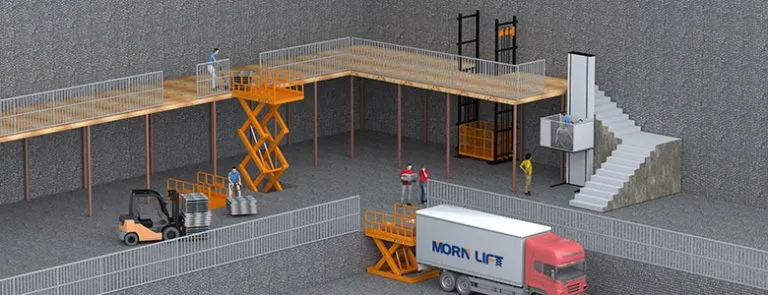Table of Contents
The main content of industrial freight elevator maintenance is cleaning, tightening, adjustment, lubrication, and corrosion protection.

The mechanical department of each project must strictly perform various maintenance tasks in accordance with the maintenance manual and maintenance procedures of the industrial freight elevator according to the specified cycle, reduce the wear rate of parts, eliminate hidden dangers of failure, and extend the service life of the machinery. Need to do the following:
1. Routine maintenance: Routine maintenance focuses on cleaning, lubrication, inspection, and tightening. Routine maintenance should be carried out as required before, during, and after each shift. Routine maintenance is done independently by the mechanical operator.
2. Regular maintenance: According to the maintenance requirements of various mechanical equipment, after reaching the specified working hours or specified mileage, corresponding regular maintenance must be carried out, including the following:
- Primary maintenance: The primary maintenance work is carried out on the basis of routine maintenance. The key tasks are lubrication, tightening, and inspection of relevant parts and cleaning of the “three filters” work (ie clean air, oil, fuel filter) Wait). The first level of maintenance is guided by the mechanical team leader and completed by the mechanical operator.
- Secondary maintenance: The secondary maintenance work focuses on inspection and adjustment. Specifically, check the working conditions of the engine, clutch, transmission, transmission mechanism, steering and braking mechanism, working device, hydraulic system, and electrical system, and make necessary adjustments to eliminate the faults found to ensure that the mechanical assemblies and parts have Good working performance. The secondary maintenance is completed by the machine operator assisting the maintenance personnel. Hydraulic lifting table
- Three-level maintenance: The focus is on detecting, adjusting, eliminating hidden troubles and balancing the degree of wear of various parts. Diagnose and inspect the parts that affect the performance and the parts with fault signs, and then complete the necessary replacement, adjustment, and troubleshooting. The third-level maintenance requirements are completed by fully-skilled maintenance personnel with the help of advanced testing instruments and tools.
3. Special maintenance
- Walk-in maintenance
New machines or machinery after overhaul must be run-in maintenance during the running-in period. When the machine is used during the specified run-in period, the load and speed should be increased step by step according to the corresponding regulations, and the lubrication and tightening conditions should be checked comprehensively, and the conditions of the whole machine should be observed. If any abnormalities are found, they should be resolved in time. The focus of running-in maintenance is to replace the lubricating oil, lubricate each part, and tighten each bolt. Perform secondary maintenance after the running-in period.
- Seasonal maintenance
The machine should be maintained once a year before summer or winter. The focus is on the fuel-fuel system, hydraulic system, cooling system, and starting system. The following work needs to be done according to the actual situation: replacing the fuel oil and hydraulic oil, adjusting the relative density of the battery electrolyte, taking cold-proof or cooling measures, and cleaning the cooling system.
- Disable maintenance
When the mechanical equipment needs to be out of service for a period of time due to seasonal factors (such as winter holiday), etc., it should be out of service for maintenance. Mainly do cleaning, plastic surgery, matching, anti-corrosion, and other work.
- Storage and maintenance
The storage and maintenance should be carefully implemented in accordance with the storage requirements to reduce the erosion of the long-term storage equipment by the natural climate.


